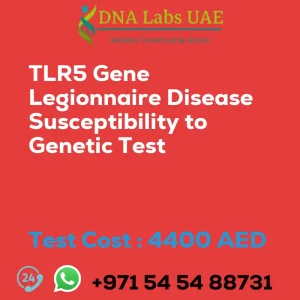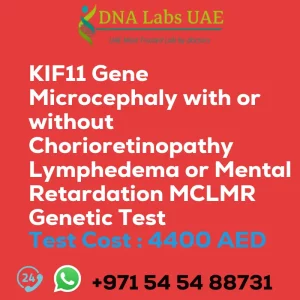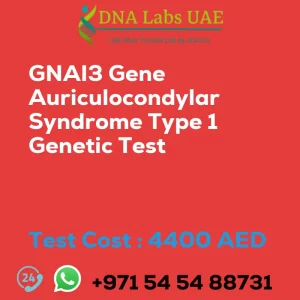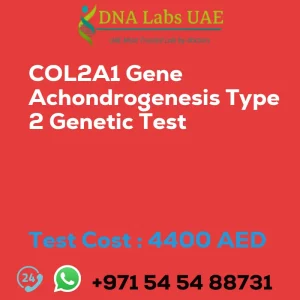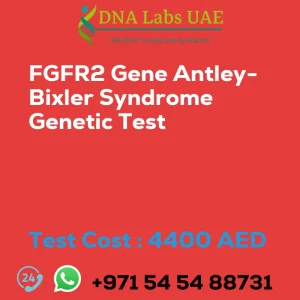RIN2 Gene Macrocephaly alopecia cutis laxa and scoliosis Genetic Test
At DNA Labs UAE, we offer the RIN2 Gene Macrocephaly alopecia cutis laxa and scoliosis Genetic Test at a cost of AED 4400.0.
Test Components
- Price: 4400.0 AED
- Sample Condition: Blood or Extracted DNA or One drop Blood on FTA Card
- Report Delivery: 3 to 4 Weeks
- Method: NGS Technology
- Test Type: Dysmorphology
- Doctor: Pediatrics
- Test Department: Genetics
Pre Test Information
Before undergoing the RIN2 Gene Macrocephaly alopecia cutis laxa and scoliosis Genetic Test, it is important to provide the clinical history of the patient who is going for the test. A Genetic Counselling session will be conducted to draw a pedigree chart of family members affected with RIN2 Gene Macrocephaly, alopecia, cutis laxa, and scoliosis NGS Genetic DNA Test gene RIN2.
Test Details
The RIN2 gene is associated with a rare genetic disorder called macrocephaly, alopecia, cutis laxa, and scoliosis (MACS) syndrome. This syndrome is characterized by several clinical features:
- Macrocephaly: Abnormally large head size.
- Alopecia: Partial or complete loss of hair.
- Cutis laxa: Loose, sagging, and wrinkled skin.
- Scoliosis: Abnormal sideways curvature of the spine.
The NGS (Next-Generation Sequencing) genetic testing is a diagnostic tool used to identify genetic mutations or variations in the RIN2 gene. This test involves sequencing the entire coding region of the gene to identify any alterations that may be responsible for MACS syndrome. NGS technology allows for the simultaneous analysis of multiple genes, making it a powerful tool for genetic diagnosis.
If a patient presents with the clinical features of macrocephaly, alopecia, cutis laxa, and scoliosis, a geneticist or healthcare provider may recommend NGS genetic testing to confirm the diagnosis. Identifying the specific mutation in the RIN2 gene can provide valuable information for the patient and their family regarding prognosis, potential complications, and possible treatment options.
| Test Name | RIN2 Gene Macrocephaly alopecia cutis laxa and scoliosis Genetic Test |
|---|---|
| Components | |
| Price | 4400.0 AED |
| Sample Condition | Blood or Extracted DNA or One drop Blood on FTA Card |
| Report Delivery | 3 to 4 Weeks |
| Method | NGS Technology |
| Test type | Dysmorphology |
| Doctor | Pediatrics |
| Test Department: | Genetics |
| Pre Test Information | Clinical History of Patient who is going for RIN2 Gene Macrocephaly, alopecia, cutis laxa, and scoliosis NGS Genetic DNA Test. A Genetic Counselling session to draw a pedigree chart of family members affected with RIN2 Gene Macrocephaly, alopecia, cutis laxa, and scoliosis NGS Genetic DNA Test gene RIN2 |
| Test Details |
RIN2 gene is associated with a rare genetic disorder called macrocephaly, alopecia, cutis laxa, and scoliosis (MACS) syndrome. MACS syndrome is characterized by several clinical features, including: 1. Macrocephaly: This refers to an abnormally large head size, which is often evident from birth or early childhood. 2. Alopecia: It is the partial or complete loss of hair, including scalp hair, eyebrows, and eyelashes. 3. Cutis laxa: This is a condition characterized by loose, sagging, and wrinkled skin. The skin may appear to be prematurely aged. 4. Scoliosis: It is an abnormal sideways curvature of the spine, which can lead to an asymmetrical posture and potential complications. NGS (Next-Generation Sequencing) genetic testing is a diagnostic tool that can be used to identify genetic mutations or variations in the RIN2 gene. This test involves sequencing the entire coding region of the gene to identify any alterations that may be responsible for MACS syndrome. NGS technology allows for the simultaneous analysis of multiple genes, making it a powerful tool for genetic diagnosis. If a patient presents with the clinical features of macrocephaly, alopecia, cutis laxa, and scoliosis, a geneticist or healthcare provider may recommend NGS genetic testing to confirm the diagnosis. Identifying the specific mutation in the RIN2 gene can provide valuable information for the patient and their family regarding prognosis, potential complications, and possible treatment options. |


